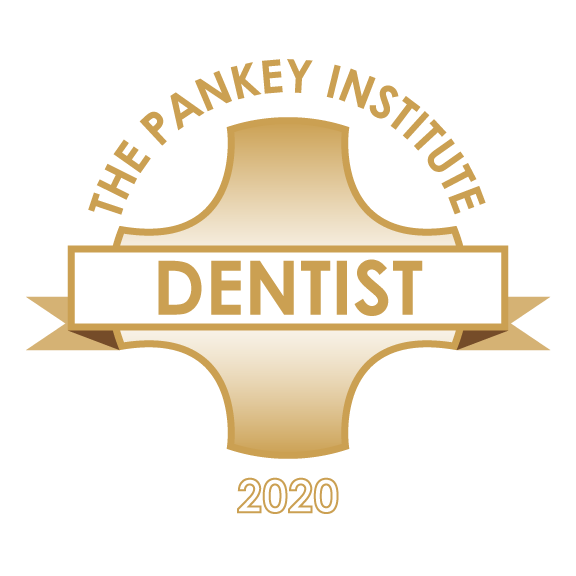

 I really felt welcomed at my appointment. I hadn't been in the office for awhile, yet I received a hug from the office staff!! I hope that I can always come to this office for my dental issues, because I just love it.
I really felt welcomed at my appointment. I hadn't been in the office for awhile, yet I received a hug from the office staff!! I hope that I can always come to this office for my dental issues, because I just love it.
Teri Sutton

Comprehensive Examinations
As part of the overall clinical assessment of our patients, comprehensive examinations are performed at each preventive re-care visit. These include thorough evaluation of the oral cavity and adjacent structures. Deviations from normal may be identified and dental disease diagnosed that may require further treatment. The oral tissues are very keen indicators of the general health of our patients. Changes that we identify in the oral structures may be the first indication of systemic disease present in other parts of the body. For more scientific information on the oral-systemic links. For patient friendly reading describing the oral-systemic link.
 Dental Hygiene Preventive Maintenance Visits and Oral Hygiene Instruction
Dental Hygiene Preventive Maintenance Visits and Oral Hygiene Instruction
Dental Hygiene Preventive Maintenance Visits (re-care appointments) involve professional treatment by our Registered Dental Hygienists. Comprehensive oral assessments are completed utilizing professional knowledge and technical skill. Clinical evaluations screen for gum disease utilizing instruments that measure the attachment level of the gum tissues. In addition, examinations are performed to evaluate the presence of decay (cavities). During your re-care visit, the removal of both hard (calculus) and soft (plaque/biofilm) deposits that accumulate on the teeth and around the gingival (gum) tissues are removed. These deposits contain microorganisms responsible for the dental diseases that we fight to prevent, namely decay (dental caries or cavities) and periodontal (gum) disease. Based on individual evaluations, dental re-care visits range in frequency from three to six month intervals.
The success of dental hygiene treatment depends upon the control of biofilm by our patients on a daily basis. Individual oral hygiene instruction is given tailored to meet the needs of each patient. A variety of physiotherapy aids are discussed and proper instruction for their use is demonstrated. These include, but are not limited to, electric toothbrushes, dental floss, interdental brushes, and a variety of manual toothbrushes.
Risk Assessments
Risk factors are traits, lifestyle habits, behaviors or conditions that are associated with an increased risk of a disease occurring. As part of our preventive care program, both caries risk assessments and periodontal risk assessments are completed on each patient during the dental hygiene appointment. Upon evaluation of individual risks, the probability and susceptibility of developing dental disease can be recognized. Each patient is placed in a risk category depending upon the individual risk factors they present. Based upon their risk factors, we work together creating a strategy that best meets the needs of the patient to prevent the occurrence of dental disease. Interventions are suggested as a part of the preventive care program to minimize the patient's risk of disease. View our Caries Risk Assessment. Learn more about periodontal risk assessments.
Oral Cancer Screenings
The goal of oral cancer screenings is to detect cancer in the oral cavity and the adjacent oral structures at the earliest possible stage. Early detection increases the probability of a favorable prognosis. Both intraoral and extraoral examinations take place by visual inspection and manual palpation. Early lesions often present without symptom and are unreported by the patient. Recognition of variations from normal during our oral cancer screening is the principal method for early detection and control of oral cancer. If a suspicious lesion is detected, a brush biopsy is performed in our office. If further treatment is deemed necessary, a referral to a specialist will take place. Learn more about oral cancer screenings
Low Radiation Dental Radiographs (X-Rays)
Proper patient evaluation and patient protection measures are considered prior to any radiation exposure. With proper evaluation and protection, the amount of radiation received by our patients is minimized.
We utilize the current guidelines established by the American Dental Association and the U.S. Food and Drug Administration for prescribing the number, type and frequency of dental radiographs. Our equipment is state-of-the-art, allowing images to be exposed on dental film with the lowest amount of radiation possible. Patient protection measures are used including lead aprons, thyroid collars, fast speed film and film-holding devices to limit the amount of radiation received by each of our patients.
Radiographic evaluations are critical to the comprehensive diagnostic capabilities of our team. Interpretation of our patient's radiographs is a very important component of patient care and enables us to detect diseases, lesions and conditions that cannot be identified clinically.
Learn more about the guidelines for prescribing dental radiographs.
Non-Surgical Periodontal Therapy/Soft-Tissue Management Program
Periodontal disease is an infection of the tissues that surround and support our teeth, specifically gum tissues and bone. When disease producing bacteria invade the gum tissues and are not properly removed, breakdown of these tissues occurs and teeth become at risk. As the disease progresses, bone breaks down leading to tooth mobility. Early stages of periodontal disease can be managed in our office utilizing a non-surgical, less aggressive approach to periodontal therapy.
Non-surgical therapy involves careful removal of plaque and calculus from the root surfaces (scaling and root planing) of the teeth to decrease inflammation and promote tissue reattachment. At times, non-surgical therapy requires the use of local anesthesia, application of fluorides and placement of antibiotic medications underneath the gum tissues that present with deep pockets. This type of treatment may require multiple appointments in which quadrants of the mouth are treated one at a time.
Throughout the course of therapy, your periodontal health will be continually re-evaluated. Plaque control at home is a key component to the success of this therapy. In addition, adherence to a more frequent re-care interval helps to control disease. At times, additional treatment may be required that involves referral to a specialist to manage disease sites that do not respond to non-surgical therapy.






